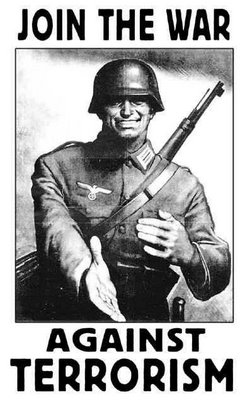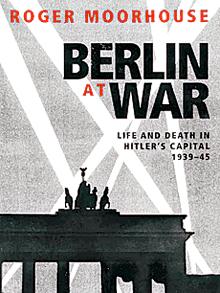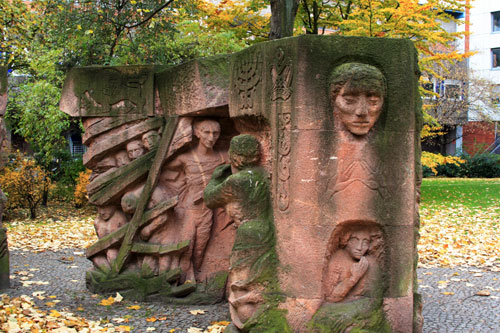Alex Constantine - December 6, 2012
By Uwe Klussmann
Der Spiegel, November 29, 2012
In the mid-1920s, Joseph Goebbels was given the difficult task of fostering support for the growing Nazi Party in Berlin, "the reddest city in Europe besides Moscow." But, by 1933, a combination of street brutality and political smarts succeeded in catapulting the party past rival parties.
On that gray Nov. 7 in 1926, there was no indication that the short 29-year-old man who walked with a limp and had just stepped off of a train at Berlin's Anhalter Station would shape the destiny of the German capital. Joseph Goebbels, a career official with the National Socialist German Workers' Party (NSDAP), or Nazi Party, had arrived on what seemed to be an impossible mission. As Gauleiter, or regional party leader, he had been tasked with leading the fight for power in Berlin.
ANZEIGE
At the time, the splinter group led by Adolf Hitler had 49,000 members throughout all of Germany. It was in sad shape in the capital, where it could only boast a few hundred members. In a report written in October 1926, a party official wrote of the "complete breakdown of the Berlin organization," which he described as a self-destructive, confused group that was almost beyond repair.
The party office at Potsdamer Strasse 109 could only reinforce this impression. It consisted of a dark basement room that reeked of cigarette smoke, sweat and beer. Party members referred to it as "the opium den."
At the end of the year, Goebbels rented a more acceptable office for the party on Lützowstrasse. He kicked the do-nothings and the troublemakers out of the party and called upon the remaining members to participate in various campaigns.
Goebbels had been in office for hardly a week before he organized a march through the Neukölln district, a communist stronghold, that devolved into a street riot.
Goebbels wanted Hitler's party to show its colors in Berlin, which he described as "the reddest city in Europe besides Moscow." Together, the Social Democratic Party (SPD) and the Communist Party of Germany (KPD) captured 52.2 percent of the vote in the 1925 municipal elections. Berlin's new Nazi leader decided to combat the left's superiority in numbers with a frontal attack.
He went to the Pharussäle, a meeting hall often used by the KPD for its mass rallies in Berlin's Wedding district, and gave a speech on the subject of "The Collapse of the Bourgeois Class State." This provoked the communists.
On Feb. 11, 1927, the Nazi Party meeting turned into a violent brawl between the two groups. Beer glasses, chairs and tables flew through the hall, and severely injured people were left lying covered with blood on the floor. Despite the injuries, it was a triumph for Goebbels, whose thugs beat up about 200 communists and drove them from the hall.
A Strategy of Provocation
Goebbels turned Berlin into a violent laboratory for the future dictatorship, availing himself of the services of the uniformed Sturmabteilung ("Assault Division"), or SA, whose members were known as the "brownshirts." The SA combined soldierly romanticism, the hatred of younger people for the older elites, and the rage of Berlin's working-class in the eastern part of the city against its wealthier western districts.
For the Nazi Party, the brownshirts -- who included the unemployed, the underemployed, apprentices and high-school students -- were "political soldiers." In Goebbel's view, their task was the "conquest of the street." In the melting pot of Berlin, these primarily young men were supposed to reconcile and embody two previously hostile worldviews: nationalism, which Goebbels believed had to be "reshaped in a revolutionary way," and a "true socialism" free of Marxism.
Berlin's Jews became the lightning rod for this experiment, which aimed to bring the social and political tensions of the metropolis to the breaking point. Goebbels, who had done his doctoral work under a Jewish professor, assigned the Jews the scapegoat role.
"The Jew" was a "negative aspect" that had to be "eradicated," Goebbels wrote in 1929. He viewed the Jews as simultaneously embodying capitalism, communism, the press and the police. His simplistic slogan "The Jews are to blame!" proved to be a slow-acting poison.
As the head of Berlin's Nazis, Goebbels chose Bernhard Weiss, the Jewish deputy chief of the city's police force, as a target of his anti-Semitic agitation. Goebbels nicknamed him "Isidore" and, after Weiss sued Goebbels for libel and won, he called him "Weiss, whom one isn't allowed to call Isidore." Goebbels derided Weiss's police officers as "Bernhardiner" ("St. Bernard dogs") and "Weiss guardsmen."
Young party members sang satirical songs about "Isidore" and wore "Isidore" masks -- and they often had the laughs on their side. Indeed, the Nazis used coarse humor as a sharp weapon in their struggle with the Weimar Republic. "We scoffed at an entire system and brought it down with resounding laughter," Gunter d'Alquen, the young editor-in-chief of Das Schwarze Korps (The Black Corps) wrote in 1937. This was the official newspaper of the Schutzstaffel ("Protection Squadron"), or SS, which was founded in 1925 as a sort of Praetorian Guard for Hitler.
Goebbels believed that "horseplay is necessary." At a showing of a film adaptation of the pacifist novel "Im Westen nichts Neues" ("All Quiet on the Western Front") on Dec. 5, 1930, at the Mozartsaal cinema on Berlin's Nollendorfplatz, members of the SA released white mice into the audience. Screaming women caused the film to be interrupted while SA men roared with laughter. Goebbels himself was sitting in the audience.
He justified his strategy of provocation by saying that the Nazis could be accused of many things, but certainly not of being dull. Street battles and brawls at political meetings forged a sense of unity and camaraderie among party members in Berlin. On May 1, 1927, Hitler spoke to them for the first time at the dignified Clou concert hall. Goebbels enjoyed Hitler's confidence and was moved to tears by his speech about "space and the people."
Party members in Berlin loved the man they called "our Dr. Goebbels" because he spent time in direct contact with them. He comforted the severely wounded, held the hands of the dying and attended the funerals of the dead.
Modest Initial Success
Goebbels, who was unable to fight in World War I because of his deformed right leg, proved to be the top soldier of an army fighting an insidious civil war. During it, the Nazis survived severe challenges. Five days after Hitler's speech at the Clou, the police banned the Nazi Party in Berlin. But that didn't stop its ascent. Goebbels, who had read the memoirs of August Bebel, a Marxist politician and co-founder of the Social Democratic Party (SPD) in Germany, had learned a lesson from the Social Democrats' struggle against Bismarck's anti-socialist laws.
The Nazis established seemingly harmless groups, such as bowling, savings and swimming clubs. Using the motto "Not dead, despite the ban," Goebbels established the newspaper Der Angriff (The Attack) in July 1927, initially as a weekly. The subheading, "For the Oppressed -- Against the Exploiters," targeted working-class readers.
At first, the Nazis enjoyed only modest success. Some 39,000 Berliners, or 1.6 percent of the city's entire population, voted for Hitler's party in the May 1928 election to the Reichstag, as the parliament was called. However, Berlin's ban on the Nazi Party was lifted for the election campaign. When Goebbels became one of 12 Nazi members of the Reichstag, he did so with the challenging words: "We have nothing to do with the parliament. We reject it from within."
Indeed, the strategy of the Berlin branch of the Nazi Party was to serve as an extra-parliamentary opposition, forming cells on the street and in businesses, using the communist approach as a model. In 1928, the party staged a rally with several thousand supporters, filling the Sportpalast winter sports venue on Potsdamer Strasse.
In 1929, the party headed by "bandit-in-chief Goebbels," as the communists called him, captured 5.8 percent of the vote for city council, securing 13 seats in the city's parliament.
The Weimar Republic's "system," which the Nazis attacked, was relatively stable for a long time. But that changed in late October 1929, when the stock market in New York crashed. Mass unemployment rose sharply, increasing the potential for urban unrest.


